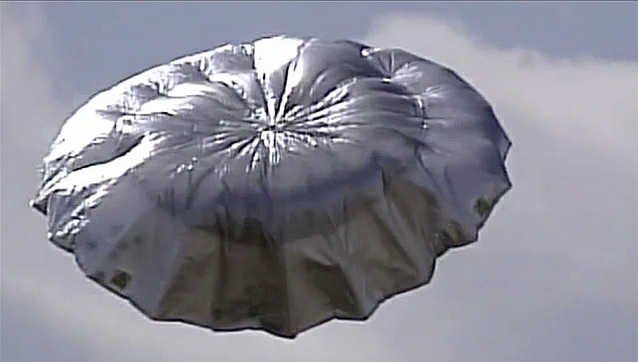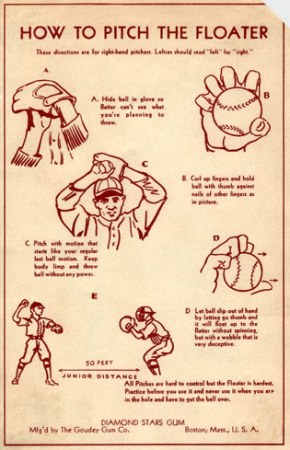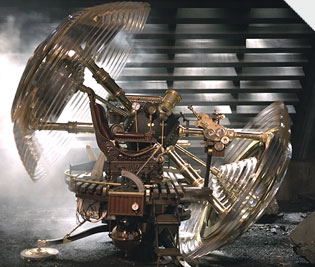

Three points! Is this shot really within the realm of physical possibility?

If we time the flight, we can then apply some ballpark approximations to determine whether the trajectory we see in the video conforms to that flight time. Using our stopwatch we observe that the ball is in the air for 3.8 seconds before passing through the basket. The horizontal distance to the basket from the launch point is approximately 50 meters, and the launch angle θ is about 20 degrees.
Let’s use what we know about projectile motion. We know for a projectile that the horizontal motion is independent of the vertical motion, and that in the absence of significant air friction the horizontal velocity is constant. We also know that along the vertical axis, a projectile has a constant downward acceleration due to gravity 9.8 m/s2.
Looking at the horizontal part of the motion and accounting for the launch angle we can then determine the initial speed (v0) of the basketball necessary to cover the horizontal distance in 3.8 seconds. We get
Δx = vhorizontal t = v0cosθt
and therefore v0 = Δx/cosθt = 50 m /[cos 20 (3.8 s)] = 14 m/s
Now if we look at the vertical part of the motion we can determine how far the ball would drop in 3.8 seconds. We’ll then compare our theoretical result to the actual vertical distance from the third deck down to the basket that we observe in the video. (We estimate that drop to be similar to the horizontal distance of about 50 meters.) Therefore, based on the time of flight and the initial velocity that we determined above we calculate a vertical drop of
Δy = v0vertical t + ½ at2= v0 sin t -- ½ gt2= 14m/s(sin 20)(3.8 s) -- ½ (-9.8m/s2)(3.8)2= -53 m
Well, this corresponds pretty well to what we see in the video. Even accounting for the effects of air resistance (which we did not address above to keep things simple) the result isn’t altered drastically. The motion recorded in the video (in what appears to be a continuous frame) certainly appears possible according to the laws of physics.
Now whether or not this was done in a single take is another matter!
Adam Weiner is the author of Don’t Try This at Home! The Physics of Hollywood Movies.











